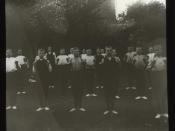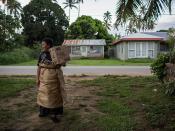IntroductionIn recent years, attention has been paid to the social exclusion of Muslim women. It has been argued that Muslim women suffer a double burden: not only do they share with other disadvantaged groups the exclusions based in racial discrimination, economic deprivation and sexism, but they are also subject to the "internal" disadvantage of being members of communities which often lay emphasis on exercising control over them. That is, fathers, brothers, husbands and (male) community (and religious) leaders may combine to prohibit Muslim women from actively participating in activities outside of the home. The effects of such exclusions and prohibitions can have many manifestations, including effects on personal health and physical activity rates, the latter being particularly low in this group.
Health Risk Factors associated with lack of physical activityPhysical inactivity is a well-established risk factor associated with conditions such as chronic heart disease, hypertension, obesity and non- insulin dependent diabetes mellitus.
Research shows that chronic heart disease related mortality rates in South Asian women are 43% higher than the national average1. The prevalence of diabetes is three to four times higher in the Asian population than in people of European origin2. The beneficial effects of physical activity are thus of particular significance for the South Asian community.
How much physical activity is good for health?In 1995 the US Centers for Disease Control and Prevention and the American College of Sports Medicine suggested that every American adult should accumulate 30 minutes or more of moderate-intensity physical activity on most, preferably all, days of the week3. Moderate intensity physical activity is defined as activity at between 40 and 60% of maximum aerobic capacity. Subjectively, this means breathing slightly harder, having a slightly raised heart rate and feeling warmer but not being out of breath or sweating profusely; the types of...


